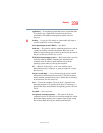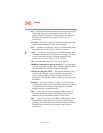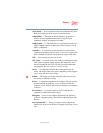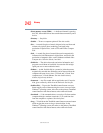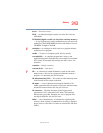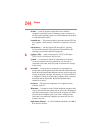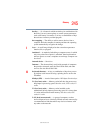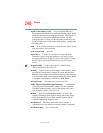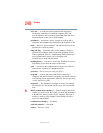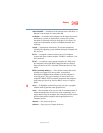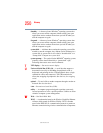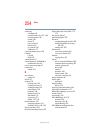
247
Glossary
5.375 x 8.375 ver 3.1
multimedia — A combination of two or more media, such as
sound, animation, and video in a computer program or
presentation.
Musical Instrument Digital Interface — See MIDI.
N
network — A collection of computers and associated devices that
are connected by communications facilities. A network allows
you to share data and peripheral devices, such as printers, with
other users and to exchange electronic mail.
non-interlaced — A method of refreshing a computer screen, in
which each pixel of every line is refreshed as the electron beam
scans across and down the screen. Compare interlaced.
non-system disk — A disk for storing programs and data that
cannot be used to start the computer. Compare system disk.
NT file system (NTFS) — An advanced file system designed for
use specifically with the Windows NT operating system.
O
online — Available through the computer. Online may refer to
information being read from your own computer’s hard disk,
such as online documentation or online help, or to information
coming from another company on a company network or the
Internet.
operating system — A set of programs that controls how the
computer works. Examples of operating systems are
Windows
®
98 Second Edition and Windows
®
2000 operating
systems.
P
palette — See color palette.
parallel — Processes that occur simultaneously. In
communications, it means the transmission of more than one bit
of information at a time. On your computer, the parallel port
provides a parallel communications interface between the
computer and an appropriate device. Most modern printers are
parallel. Compare serial.
password — A unique string of characters entered by a user to
verify his or her identity to the computer or the network.



